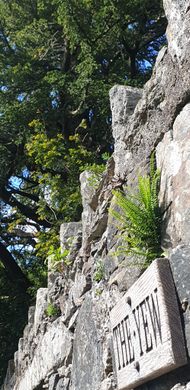The Fortingall Yew
Possibly the oldest living thing in Europe, more likely a pagan survivor.
Some people claim Scotland’s Fortingall Yew is 5,000 years old, making it the oldest living thing in Europe.
Others more conservatively argue the tree is merely 2,000 to 3,000 years old. In any case, the ancient, gnarled tree existed long before the Fortingall Church and graveyard with which it now shares space. Scholars believe that ancient pagans venerated Yew trees — which are not only long-living, but also deadly poisonous — and associated them with death and the afterlife. Early Christians were thought to have appropriated the trees into their own worship practices, building churches and consecrating graveyards near them.
In any case, the Yew, as it is colloquially known, has seen Picts, Celts, English, Romans, and now tourists from around the world. There’s even an unsubstantiated, but persistent, legend that Pontius Pilate was born in this village during the Roman occupation and played beneath the Yew as a boy.
Looking at the base of the tree, viewers will notice a series of wooden pegs. This is to simulate the estimated circumference of what the trunk would look like today. Because of its significance and supposed magical properties, many pieces were removed.
Know Before You Go
The Fortingall Yew is located in the grounds of the Fortingall Churchyard. There is limited parking between the church and hotel located next door. Because of vandals, the tree has been sequestered behind a stone barrier to prevent further theft.






























Follow us on Twitter to get the latest on the world's hidden wonders.
Like us on Facebook to get the latest on the world's hidden wonders.
Follow us on Twitter Like us on Facebook